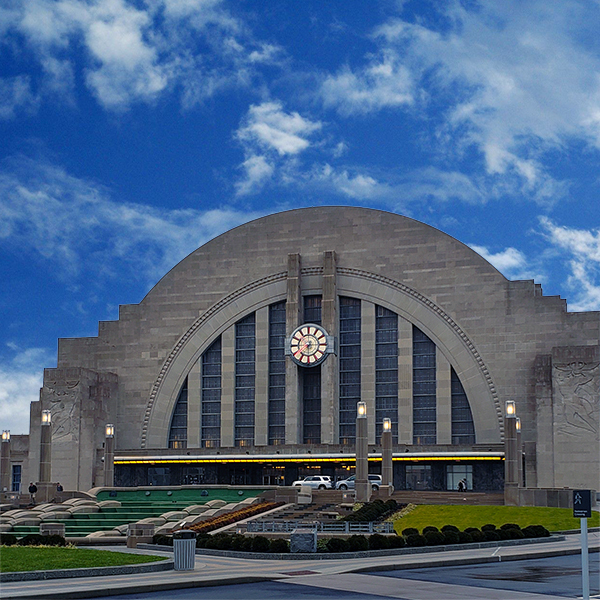posted by Alecia Kintner ON
Nov 30, 2018

In the space of just a few years, we’ve seen a great wave of renewals in the places and spaces where Cincinnatians experience the arts. Last October, before the dazzle of BLINK, we celebrated the rebirth of Cincinnati landmark Music Hall. Other restoration projects made facilities more inclusive at Ensemble Theatre Cincinnati, Memorial Hall, Cincinnati Art Museum and the Barn in Mariemont. New spaces have been built for Cincinnati Shakespeare Company, The Children’s Theatre of Cincinnati, Kennedy Heights Arts Center and more.
Recently, we saw the ribbons cut at both the restored Union Terminal and the new Madcap Education Center — the latest in the region’s strategic series of arts enhancement projects.
Cincinnati Museum Center unveiled the completed restoration of Union Terminal on November 17. The restoration began when Union Terminal and Music Hall both appeared on the National Trust for Historic Preservation’s 11 Most Endangered Historic Places list in 2014. This was an inauspicious designation: it was the first time the list had ever featured two sites from the same city. But with leadership, vision and philanthropy, both icons were saved by a groundswell of support that characterizes Greater Cincinnati.
The general public showed its support for saving Union Terminal by voting to approve a special tax for its renovation. In appreciation, Cincinnati Museum Center found innovative ways to continue engaging with the community, even while it was closed. Items from their collection traveled to non-traditional spaces like CVG Airport, the Cincinnati Library and even Rhinegeist Brewery. Its education programs continued with gusto. In fact, ArtsWave’s Young Professional Committee awarded the Museum Center grants in each of the last three years for their CurioCity program. A lifelong learning series, CurioCity invites curious, fun-loving adults to socialize with friends and museum curators around intriguing topics and locations throughout the city.
Now, after four years of continuous work, Union Terminal is open to the public once again. The building has been hardened for harsh weather. New shops and dining options are available. New lighting has been installed to give you a better look at the gloriously restored mosaic wrapping around the rotunda. Even the clock in front of the building and the landscaping have been refurbished. The fountain welcomes everyone to this icon and West End anchor, now preserved for future generations.
Meanwhile, in Westwood, the curtain has risen on a new community arts center, ingeniously transformed from an early 20th century Cincinnati Bell transfer station. After seven years of planning, fundraising, design and construction, the Madcap Education Center opened its doors on November 2. In addition to a permanent theatrical home for Madcap’s beloved puppet shows, the new headquarters features studios and galleries to allow for year-round, kid-focused arts education.
The Madcap Education Center is already proving to be an asset to the neighborhood. The project repurposed a long-vacant historic building in a central area. Cafés, breweries and other businesses are popping up in the area immediately surrounding the building. It’s the latest example of the arts’ unique ability to enliven neighborhoods.
In fact, Madcap’s new home is the third community development project that parent organization Cincinnati Landmark Productions has undertaken. CLP also built and operates the Warsaw Federal Incline Theater in East Price Hill and the Covedale Center for the Performing Arts in West Price Hill. Both theaters have spurred similar economic development and contributed to greater perceived safety and vibrancy in their neighborhoods.
And that wave of renewal and arts innovation? It’s not subsiding. Last February, Cincinnati Playhouse in the Park announced plans to build a new theater on its site in Eden Park. Groundbreaking on the facility should come next year, and the new space will open in 2021. A new home for the Clifton Cultural Arts Center and home-base for the Cincinnati Black Theater Company are also likely to be on the horizon. Like the recently completed facilities, each of these projects on the drawing board is designed to meet the needs of the community: neighborhood residents, arts patrons, and participants in classes and workshops.
Investing in cultural facilities across our region is a key way to ensure that every member of our community can live their most creative life.